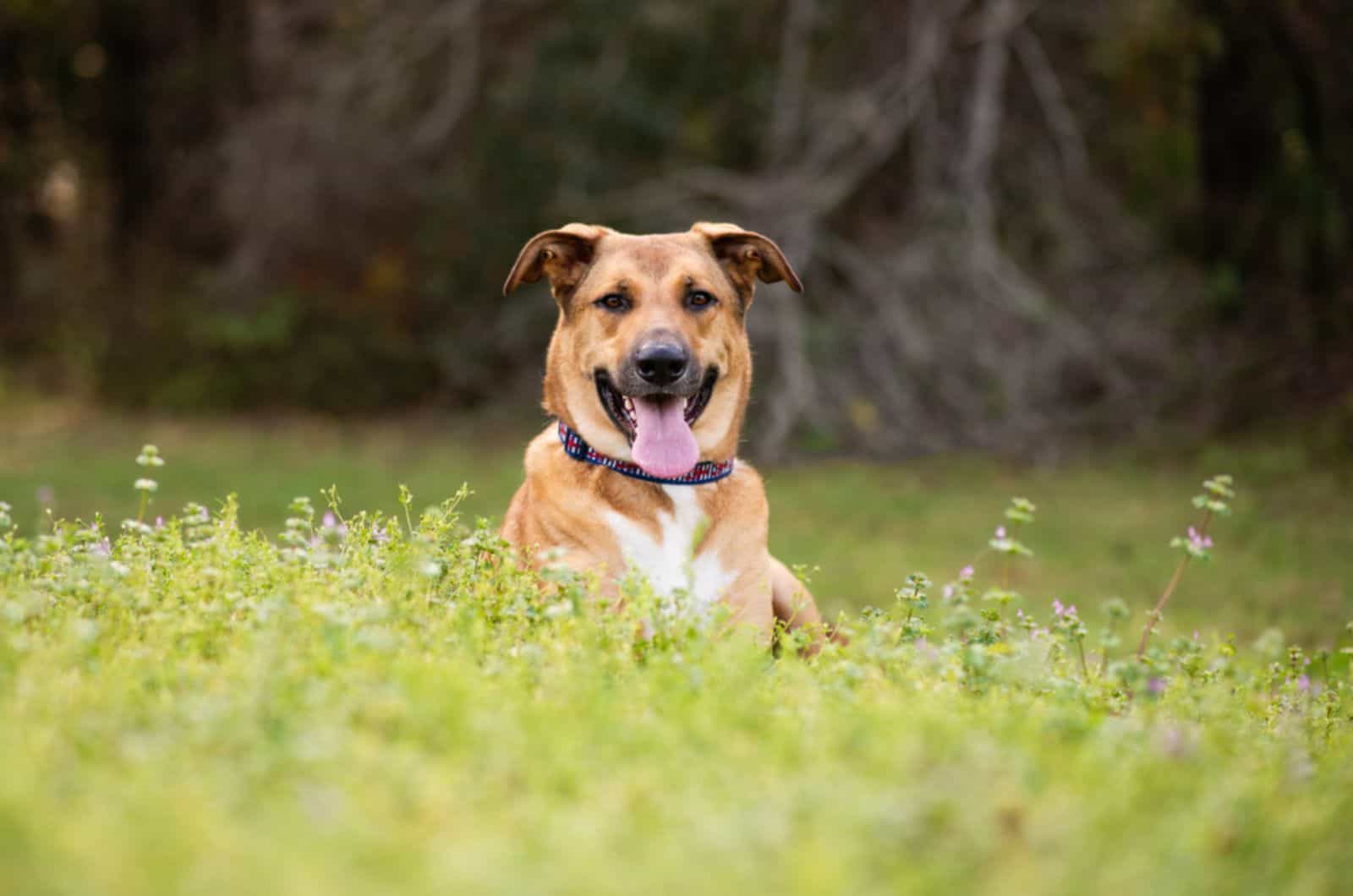Combining German Shepherds and Anatolian Shepherds to create the majestic German Anatolian Shepherds seems like a no-brainer, right?
Well, in this article we will discuss the origins of this crossbreeding, as well as some of the most important attributes of modern German Anatolians.
We will talk about their appearance and size, as well as their nutritional, physical, and grooming requirements.
Toward the end of the post, we will focus on the health of these mixed-breed dogs and briefly go through some of the most common health problems that they face.
If you already know about these dogs or if this is your first time hearing about them, we think you will like this piece. Similarly, whether you’re planning to adopt a German Anatolian Shepherd, or just reading out of curiosity, we are positive that you will find a lot of interesting stuff here.
What Is The German Anatolian Shepherd?
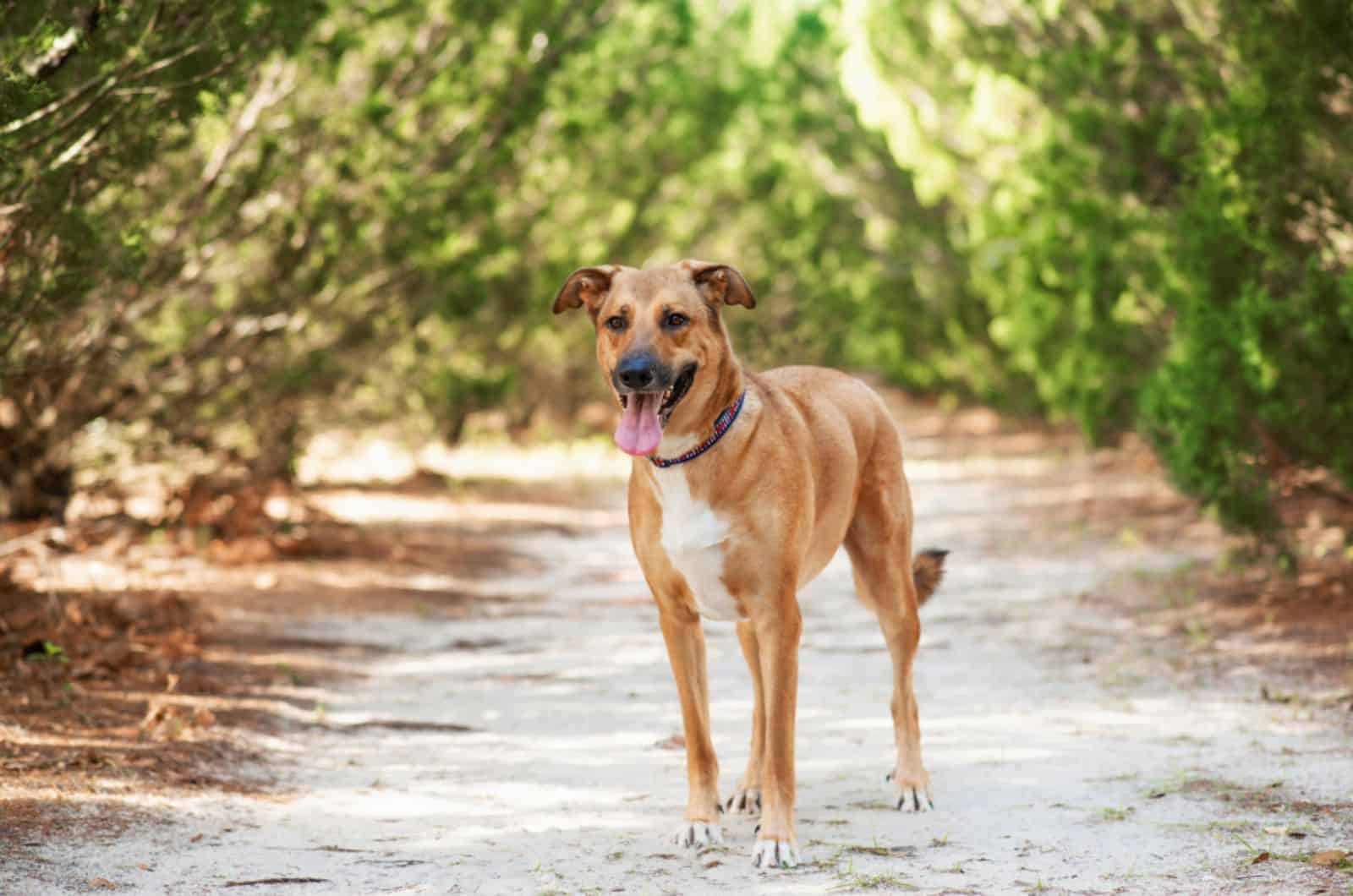
To start, we will give you some basic facts about this proud and brave dog breed.
The German Anatolian Shepherd is a big dog with a strong sense of independence. They came from German and Anatolian Shepherds, which were both originally intended to serve as guarding and herding dogs.
Even though this breed is regarded as a designer dog, it is not yet all that common, particularly in the United States of America. In fact, the American Kennel Club (AKC) doesn’t even recognize it.
However, they have been bred for hundreds of years to be loyal to their flock and watchful of outsiders. They are frequently territorial due to these qualities, but they still make great pets.
Parent Breeds
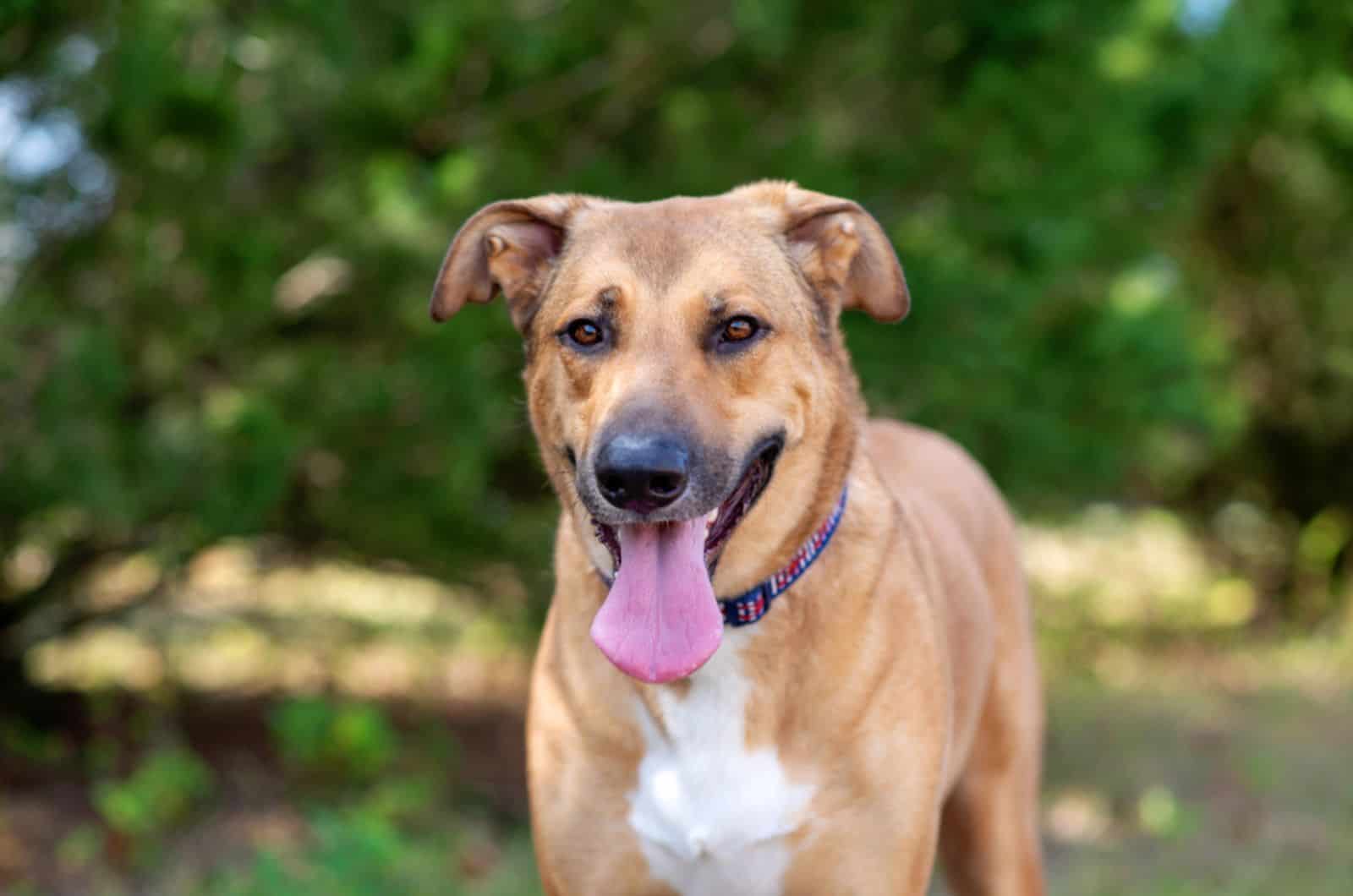
Before delving into the details that make the German Anatolian Shepherd so unique, we first need to focus on its parent breeds.
By knowing the origins and the characteristics of its ancestors, we will have more context for the mixed breed itself, and therefore we will be able to understand it better.
German Shepherd
This highly popular canine breed known as the German Shepherd is commonly used for therapy, search and rescue, and as a police dog or a family pet.
Some of its most well-known characteristics include intelligence, devotion, and trainability. German Shepherds can be identified by their thick, black-and-tan coats and huge, pointed ears on the physical level. There are additional hues as well!
They are either large or medium-sized dogs with robust, chiseled bodies, which makes them very good athletes.
Related post: 16 Dogs That Look Like German Shepherds (Meet The Clones)
Anatolian Shepherd
Despite being a far older breed, the Anatolian Shepherd is not as widely known as the German Shepherd.
Sometimes (mistakenly) referred to as Kangals, they are thought to have originated in Turkey at some point in the distant past, most likely more than 6000 years ago.
They were likely first employed for fighting and hunting large animals before becoming useful for guarding sheep. In order to better blend in with the sheep and confuse the predators, the Anatolian Shepherd altered in size and color at this time.
Related post: Anatolian Shepherd Colors: Picking The Prettiest Shade
What Does A German Anatolian Shepherd Look Like?
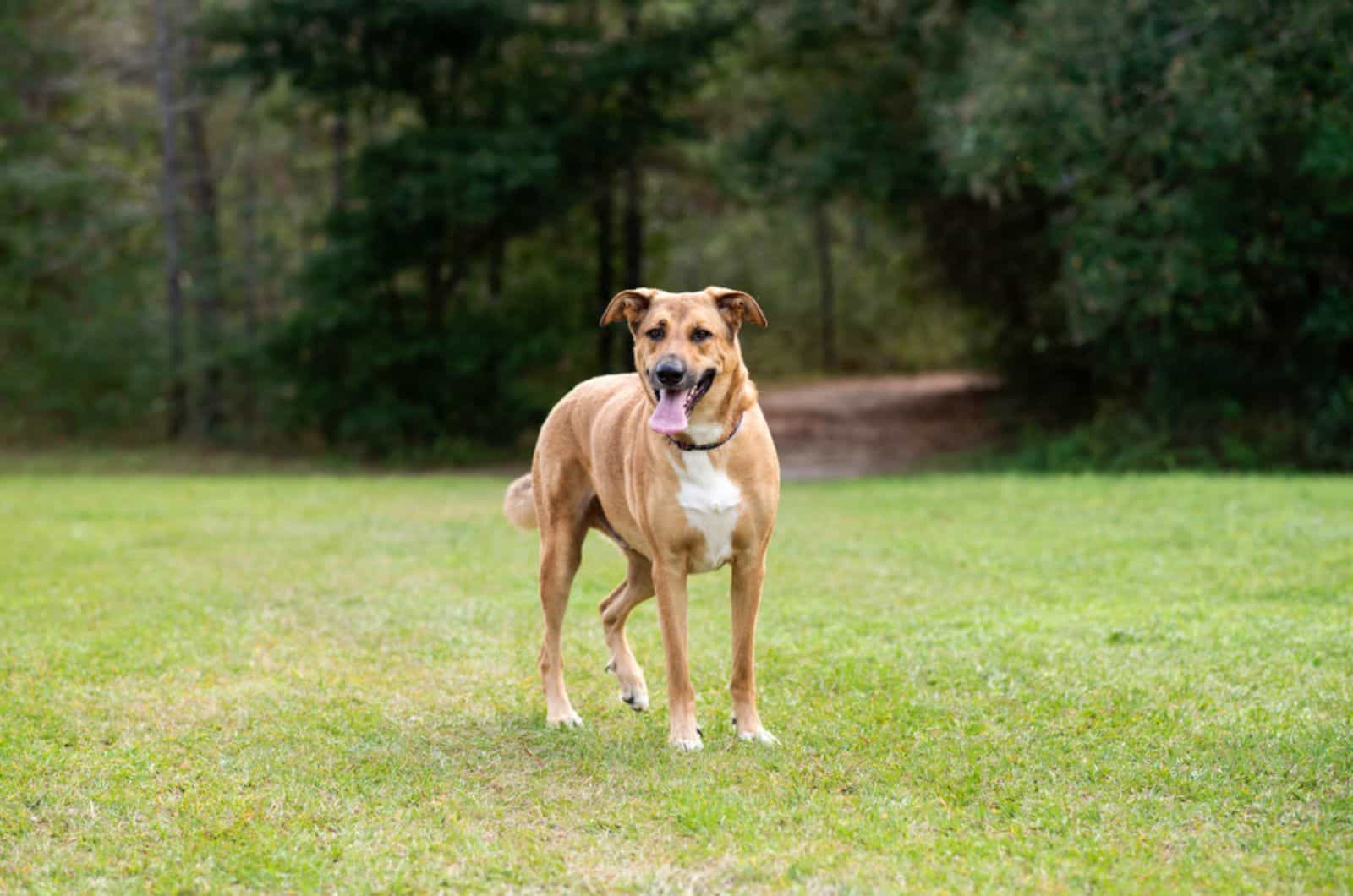
The German Anatolian Shepherd is a huge, strong dog that was created to guard sheep against dangerous predators like lynxes, wolves, and even bears.
It’s tough to accurately predict their actual size – as it is with most mixed breeds – but you can be sure that it’s going to be big.
Although certain specimens may have the more sloping back of the contemporary German Shepherd, this dog has a relatively rectangular profile.
They also have a long, muscular nose that can be either square like the Anatolian or tapered like the German Shepherd, along with a massive, chiseled head that is not overly large to appear out of proportion.
Their medium-sized almond-shaped eyes range in color from light amber to dark brown, though dark is more likely to predominate in this crossbreed.
Both parent breeds’ coats are pretty similar, passing down a thick, soft undercoat that is protected by a dense, usually straight outer layer.
German Anatolian Shepherd Personality
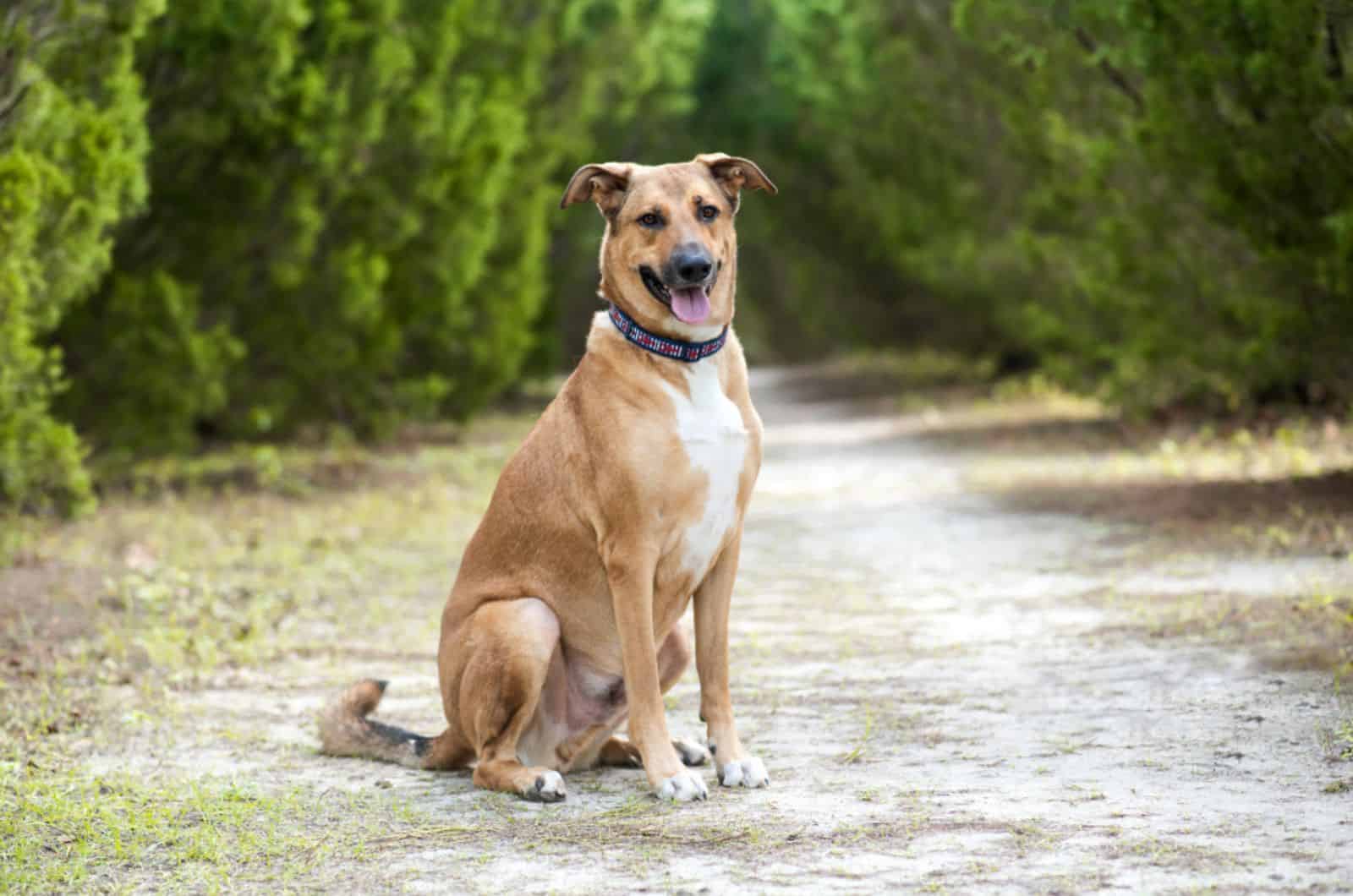
Hybrid dogs’ temperaments can often differ significantly from dog to dog since they can acquire all or part of their temperaments from either of their parent breeds.
While not particularly playful, Anatolian Shepherds have a tendency to be rather serious canines who are tolerant and even submissive with children in their family and other house pets.
However, because of their innate territoriality, they might not be as patient with people or animals that are not a part of their pack. They are independent dogs with strong instincts and their own opinions about who is a friend and who is an enemy.
The temperament of the German Shepherd can vary, from the self-assured but slightly distant disposition for which they were bred, to a hard-tempered and serious attitude.
Determining the temperament of the parents is crucial if you plan to get a German Anatolian Shepherd puppy for this reason.
The Anatolian is more independent and can act outrightly defiant during training, unlike the German Shepherd, which is one of the easiest dog breeds to teach
As a result, this specific crossbreed may be better suited to households with seasoned dog owners.
Taking Care Of A German Anatolian Shepherd

Regardless of breed, the most important factors to think about while caring for a dog are grooming, exercise, diet, and training.
If you are able to do those things correctly, your German Anatolian will have a long and healthy life with relatively few medical mishaps.
Grooming
German Anatolian Shepherds need thorough brushing two to four times a week to remove dead hair and keep the dense undercoat from tangling and matting.
However, washing them should only be done a few times a year, unless they force you to bathe them by getting extremely dirty.
This is because they have very thick undercoats and tend to shed extensively all year long
Seasonally, the German Shepherd also sheds more actively, a process known as “blowing their coat.” If this trait is passed down to your German Anatolian Shepherd, seasonal changes may necessitate more frequent brushing and bathing.
This crossbreed should have its ears plucked and checked at least once a week because it may be relatively susceptible to ear infections.
Physical Activity
This hybrid was created by breeding two strong, athletic working dogs. They require a regular regimen of intense activity to keep their minds engaged and to burn off excess energy.
These dogs need at least two hours of vigorous activity each day to keep their bodies and minds in shape.
Your hybrid will like going for walks with you, making new friends at the dog park, and practicing obedience.
Due to its tendency to be too vocal for your typical apartment complex, the German Anatolian Shepherd works best when given a sizable, secure yard to run and explore in.
To secure your yard, you might want to consider an invisible fence.
Nutrition
The GSD and the Anatolian Shepherd are both typically resistant to obesity, but the current German Shepherd breeding plans and bad exercise habits have made the risk of obesity higher.
Four to five cups of premium dog food with animal protein sources as the major ingredients should be fed to your German Anatolian Sheperd dog, according to rough calculations.
To reduce bloat problems, divide your dog’s meals over two or three feedings. If your dog seems overweight, talk to your vet about reducing calorie consumption.
Training
German Anatolian Shepherds are largely autonomous and independent, as has been stated numerous times, yet they can also be aggressive and stubborn.
They are big dogs that can sometimes challenge authority, so a firm and experienced owner who can show their dominance is necessary.
If you are a beginner, seek the assistance of a qualified trainer to assist you in communicating with your dog, or perhaps opt for an easier, more low-maintenance dog breed.
Common Health Issues In German Anatolian Shepherds
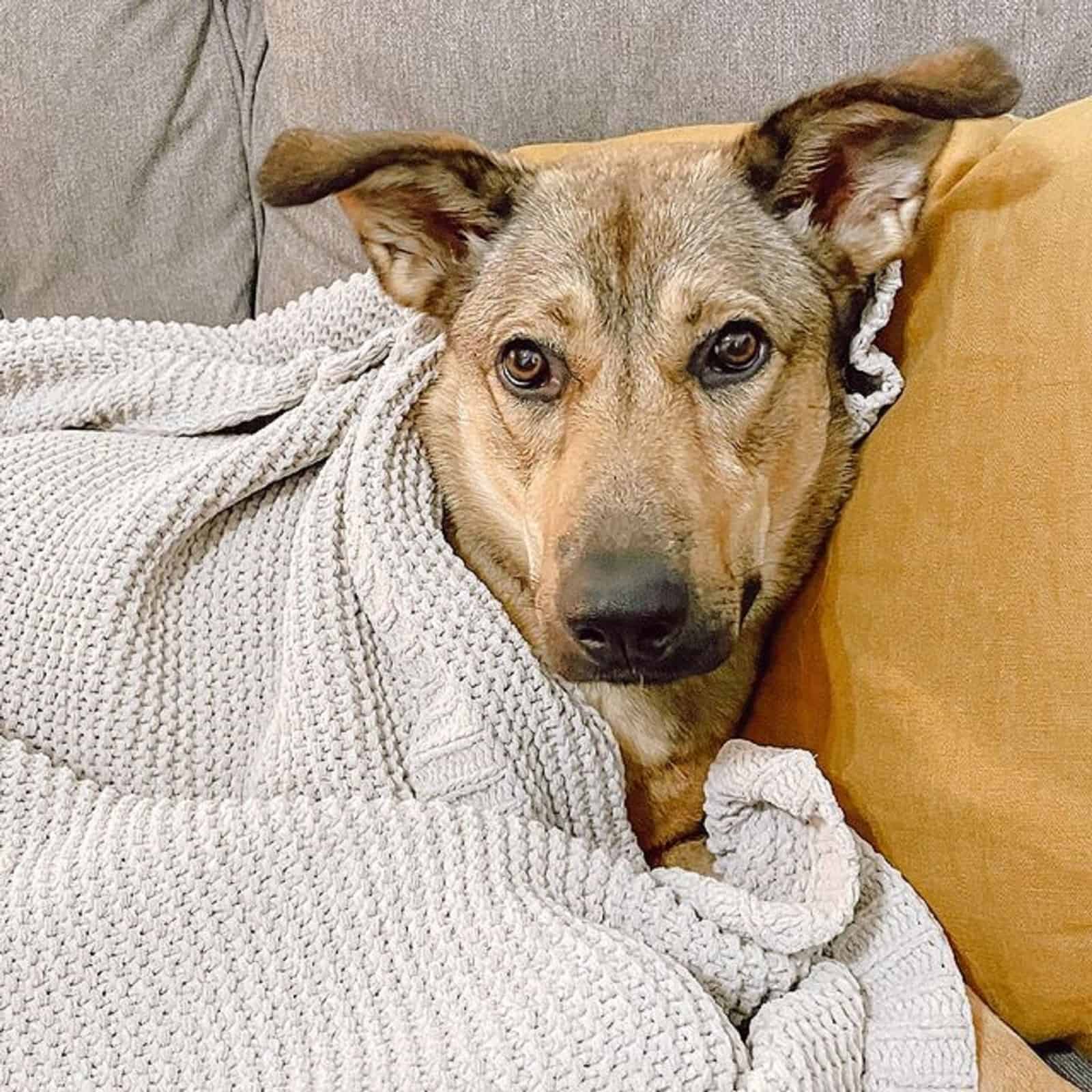
German Shepherds have a nine to twelve-year lifespan, while Anatolian Shepherds live 13 to 15 years on average, which is significantly longer than most dogs of their size.
Averaging those two, we can figure out that German Anatolian Shepherds live 10 to 13 years. They are generally a pretty healthy breed, but they may experience a few inherited medical issues from time to time.
Some of the more common ones include heart disease, bloat, hip and elbow dysplasia, hemophilia, degenerative myelopathy, and Ehler-Danlos syndrome.
Final Thoughts
This article’s goal was to briefly summarize some of the breed’s most important traits and educate potential dog owners about them.
We hope the details mentioned here have quenched your curiosity if you are one of those people.
If you want to adopt one of these dogs, keep in mind that the healthiest and best German Shepherd Beagle mix pups will come from trustworthy breeders.
To make sure to find the best ones, check out our lists of the best German Shepherd breeders and the best Anatolian Shepherd breeders.
